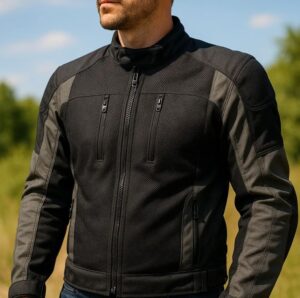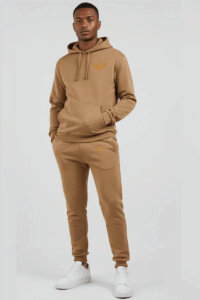Shopping for shoes can feel like navigating a maze—endless options, styles, and brands, all vying for your attention. But buying the perfect pair doesn’t have to be overwhelming. With a few expert tips and a strategic approach, you can shop like a pro, ensuring every pair you buy is stylish, comfortable, and worth your investment. Whether you’re hunting for sleek sneakers, elegant heels, or sturdy boots, this guide will equip you with the knowledge to make confident, informed decisions. Let’s lace up and dive into the art of buying shoes like a pro!
Know Your Feet: The Foundation of Smart Shoe Shopping
Before you even step into a store or browse online, understanding your feet is crucial. Shoes aren’t one-size-fits-all, and your unique foot shape, size, and needs will dictate what works best for you.
- Understand Your Arch and Foot Shape: Are your arches high, flat, or neutral? Do you have wide feet, narrow heels, or bunions? Knowing these details helps you choose shoes with the right support and fit. For instance, high arches need extra cushioning, while flat feet benefit from stability-focused designs. Podiatrists or specialty shoe stores can help analyze your foot type if you’re unsure.
- Consider Your Lifestyle: Are you buying shoes for daily commutes, marathon running, or red-carpet events? Your activities determine the type of shoe you need—athletic, casual, or formal. Make a mental note of how often you’ll wear them and in what conditions (e.g., rainy weather calls for water-resistant materials).
Prioritize Comfort Without Sacrificing Style
The golden rule of shoe shopping is that comfort and style aren’t mutually exclusive. A pro knows how to balance both.
“Comfort is the ultimate luxury in footwear. A stylish shoe that hurts your feet is a poor investment, but a comfortable one can elevate your confidence and style effortlessly.” — Dr. Emily Splichal, Podiatrist and Human Movement Specialist
- Test for Comfort in Store: Always try shoes on later in the day when your feet are slightly swollen, mimicking how they’ll feel after hours of wear. Walk around, bend your feet, and check for pinching or rubbing. The shoe should feel snug but not tight, with about a thumb’s width of space between your longest toe and the shoe’s end.
- Focus on Quality Materials: Leather, suede, and breathable mesh are durable and mold to your feet over time, offering both comfort and longevity. Avoid cheap synthetics that trap heat and wear out quickly. For athletic shoes, look for cushioned midsoles and breathable uppers to support prolonged activity.
- Don’t Ignore the Sole: The sole is your shoe’s backbone. Flexible soles are great for casual shoes, while firmer soles provide stability for hiking or running. Check the tread pattern—deep grooves are ideal for outdoor activities, while smoother soles suit indoor or urban settings.
Master the Art of Fit and Function
A pro doesn’t just buy shoes that look good—they ensure every pair fits perfectly and serves its purpose.
- Check the Width and Volume: Length is only half the equation. Shoes come in narrow (N), medium (M), and wide (W) widths. If your shoes feel tight across the ball of your foot or too loose at the heel, you might need a different width. Volume (the height of the shoe’s interior) also matters, especially for those with high insteps or thicker feet.
- Break the Brand Loyalty Myth: Sizes vary across brands due to differences in design and manufacturing. A size 9 in Nike might feel different from a size 9 in Adidas. Always try on or check brand-specific size charts when shopping online. Pro tip: Read customer reviews for insights on whether a shoe runs true to size, narrow, or wide.
- Match Shoes to Activity: Don’t wear running shoes for weightlifting or dress shoes for hiking. Each activity demands specific features—like shock absorption for running or ankle support for hiking. Cross-trainers are versatile for casual use, but specialized shoes excel for specific tasks.
| Shoe Type | Ideal Use | Key Features |
|---|---|---|
| Running Shoes | Long-distance running, jogging | Shock-absorbing midsoles, lightweight materials, breathable uppers |
| Cross-Trainers | General workouts, casual wear | Versatile support, moderate cushioning, flexible soles |
| Hiking Boots | Outdoor trails, rugged terrain | Ankle support, deep tread patterns, waterproof materials |
| Dress Shoes | Formal events, office settings | Sleek design, leather uppers, firm soles |
| Casual Sneakers | Everyday wear, light activity | Breathable materials, flexible soles, neutral colors |
Shop Smart: Timing, Budget, and Deals
Pros don’t just buy shoes—they invest in them strategically.
- Time Your Purchases: Retailers often release new shoe models in spring and fall, meaning older styles go on sale. End-of-season clearances (e.g., winter boots in early spring) are prime times to snag deals. Online flash sales or holiday promotions can also save you big.
- Set a Budget, But Prioritize Quality: It’s tempting to grab the cheapest pair, but low-quality shoes wear out faster, costing more in the long run. Aim for mid-range or higher-end brands known for durability, like New Balance for sneakers or Clarks for dress shoes. If budget is tight, check outlet stores or secondhand platforms like Poshmark for gently used, high-quality pairs.
- Read the Fine Print on Returns: Online shopping is convenient, but return policies vary. Look for retailers with free returns or try-on periods (like Zappos’ 365-day policy). Keep shoes in pristine condition with original packaging until you’re sure they’re keepers.
Stay Trendy, But Timeless
A pro knows how to blend current trends with classic appeal, ensuring shoes stay relevant beyond a single season.
- Know the Trends, But Choose Wisely: Chunky sneakers, minimalist flats, or bold-colored boots might be hot now, but will they last? Opt for versatile colors like black, white, or neutral tones for everyday wear. If you love trendy styles, limit them to one or two statement pairs.
- Build a Capsule Shoe Wardrobe: A well-rounded collection includes a few key staples: black dress shoes, white sneakers, neutral flats or loafers, and weather-appropriate boots. These basics pair with most outfits and occasions, reducing the need for constant purchases.
- Care for Your Shoes: Extend the life of your investment with proper maintenance. Use shoe trees for leather shoes, clean sneakers with mild soap and a brush, and apply waterproof sprays for suede or canvas. Rotate your shoes to prevent overuse and store them in a cool, dry place.
Visit our website for more information




